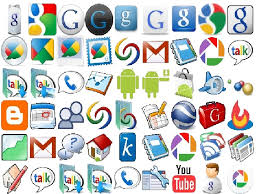The growing ecosystem of devices and products serving peoples’ health and well-being shows us that innovators already see the opportunity to serve the fast-growing market for self-care among people 50 years of age and up.
For nearly twenty years, one thing has felt inevitable: when boomers reach “old age,” senior living demand will surge. And yet ..
ChatGPT Health builds on consumer use of today's ChatGPT so responses are informed by your health information and context.
The prize honors .lumen’s Glasses for the Blind, an AI-based device that applies autonomous driving technology adapted for pedestrians. Using computer vision and local processing, the headset understands the three-dimensional environment in real time without relying on the internet or pre-defined maps and guides the user through subtle vibrations indicating a safe direction to follow.
The United States faces a fundamental mismatch between surging demand and insufficient capacity.

 March madness – a plethora of posts – a newsletter recapping them. So many topics mandated a discussion, some analysis or insight. So the unusually long month of March meant an unusually long list of seven blog posts, including several involving examinations of data and new terminology (the paid Caregiver Support Ratio (pCSR), for example) that invite scrutiny and can be very useful for companies in the age-related market segments. As March winds to a close, here are the month’s posts, of particular use to those who didn’t see them at the time of posting – each of these is summarized with the full link in the heading.
March madness – a plethora of posts – a newsletter recapping them. So many topics mandated a discussion, some analysis or insight. So the unusually long month of March meant an unusually long list of seven blog posts, including several involving examinations of data and new terminology (the paid Caregiver Support Ratio (pCSR), for example) that invite scrutiny and can be very useful for companies in the age-related market segments. As March winds to a close, here are the month’s posts, of particular use to those who didn’t see them at the time of posting – each of these is summarized with the full link in the heading. Aging in America – hosting innovators and technologists for helping older adults. The conference seesaws between west coasts (
Aging in America – hosting innovators and technologists for helping older adults. The conference seesaws between west coasts ( On the positive side, smartphone ownership for older adults is up. You have seen older people with their smartphones – they’re in concert halls and restaurants staring at their screens, fascinated -- scrolling through emails, studying photos, watching videos, seated next to other 80-somethings, who might be envious, texting on their very, uh, compact feature phones. Says Pew Research of their 2016 survey data:
On the positive side, smartphone ownership for older adults is up. You have seen older people with their smartphones – they’re in concert halls and restaurants staring at their screens, fascinated -- scrolling through emails, studying photos, watching videos, seated next to other 80-somethings, who might be envious, texting on their very, uh, compact feature phones. Says Pew Research of their 2016 survey data:  Consider the Gallup-Healthways survey about community well-being. Naples, Florida, is at the top. Really? Perhaps this caught your eye last week when you saw the
Consider the Gallup-Healthways survey about community well-being. Naples, Florida, is at the top. Really? Perhaps this caught your eye last week when you saw the  How tough is it to highlight tech innovation that could help older adults? Pretty tough, judging by the
How tough is it to highlight tech innovation that could help older adults? Pretty tough, judging by the  As we approach the date for the upcoming week of
As we approach the date for the upcoming week of  Baby Boomers, Wearable and Mobile Health Tech – A status report. During 2015, the California Health Care Foundation (CHCF) sponsored a research project to evaluate the future likelihood of wearable and mobile health tech. This
Baby Boomers, Wearable and Mobile Health Tech – A status report. During 2015, the California Health Care Foundation (CHCF) sponsored a research project to evaluate the future likelihood of wearable and mobile health tech. This  Shortage of paid care workers – a growing problem, not well-quantified by region. As AARP predicted in 2013, by the time the boomers arrive in their 80’s, just nine years from now, there would be a population deficit of
Shortage of paid care workers – a growing problem, not well-quantified by region. As AARP predicted in 2013, by the time the boomers arrive in their 80’s, just nine years from now, there would be a population deficit of  After the long, long, long HomeHero goodbye – was the analysis correct?
After the long, long, long HomeHero goodbye – was the analysis correct?  HiMSS – a tech-enabled vision of health potential
HiMSS – a tech-enabled vision of health potential